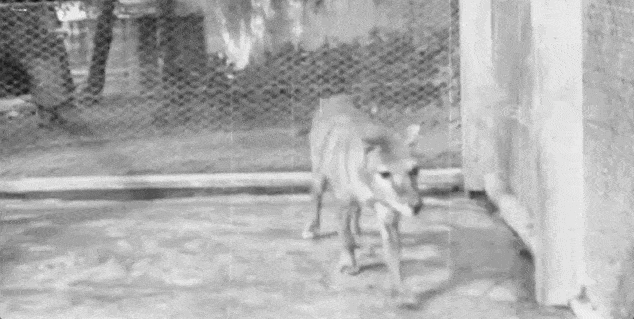This Is the Last Known Footage of a Living Thylacine

Rare black-and-white footage of the now extinct thylacine has reemerged.
The National Film and Sound Archive of Australia (NFSA) rediscovered the footage—which is part of a forgotten travelogue from the mid 1930s—and digitized it in 4K.
According to the NFSA, the film represents “the preservation of the last-known surviving moving images of Australia’s most famous extinct predator.”
As far as we know, the thylacine—also known as the Tasmanian tiger—went extinct on September 7, 1936, (though locals still report sightings) when Benjamin, the last known thylacine in captivity, passed away at the Beaumaris Zoo in the Tasmanian capital city of Hobart.
Eighteen months before his death, Benjamin was captured on film and now, for the very first time, the rare footage has been unearthed and shared with the public by the National Film and Sound Archive of Australia (NFSA).
Despite their fearsome reputations as carnivorous beasts, thylacines were actually quite timid and were easy to capture since they didn't really put up a fight—this likely led to their extinction. Thylacines had weak jaws leading researchers to believe that they hunted smaller prey such as wallabies and possums. Similar to other marsupials, thylacines—both male and female—had pouches in which they carried their young.
The footage, which was part of the Tasmania the Wonderland (1935) travelogue, was likely filmed by Sidney Cook, but the NFSA says that there are no end credits attached to the footage.
The film is 21 seconds long and shows Benjamin pacing back and forth within his enclosure while zookeeper Arthur Reid can be seen jostling some of the cage in an attempt “to cajole some action or perhaps elicit one of the marsupial’s famous threat-yawns,” per a news release.
The NFSA believes there could be more footage yet to be found and hopes that somewhere, someone captured a thylacine in the wild or, “most hopefully, film with location sound that reveals any sound made by the animal.”
Considering that the animals were exhibited in zoos all around the world—including locations such as Berlin, New York, and London—we're holding out hope that more rare footage of the extinct thylacine is somewhere out there.
You Might Also Like
